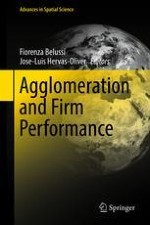2018 | OriginalPaper | Buchkapitel
Industrial Districts/Clusters and Smart Specialisation Policies
verfasst von : Fiorenza Belussi, Michaela Trippl
Erschienen in: Agglomeration and Firm Performance
Aktivieren Sie unsere intelligente Suche, um passende Fachinhalte oder Patente zu finden.
Wählen Sie Textabschnitte aus um mit Künstlicher Intelligenz passenden Patente zu finden. powered by
Markieren Sie Textabschnitte, um KI-gestützt weitere passende Inhalte zu finden. powered by
